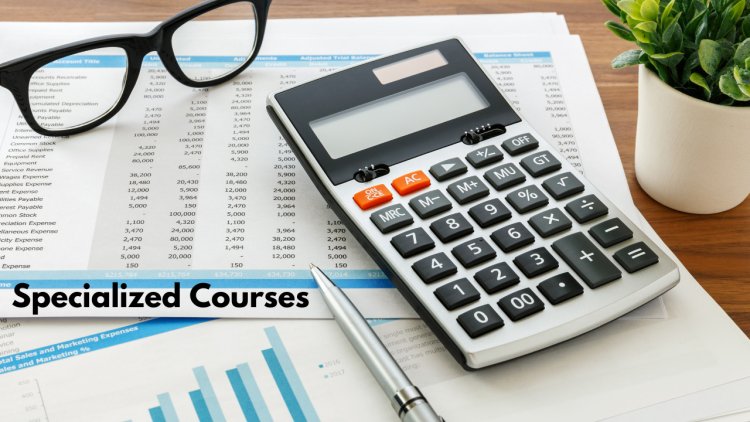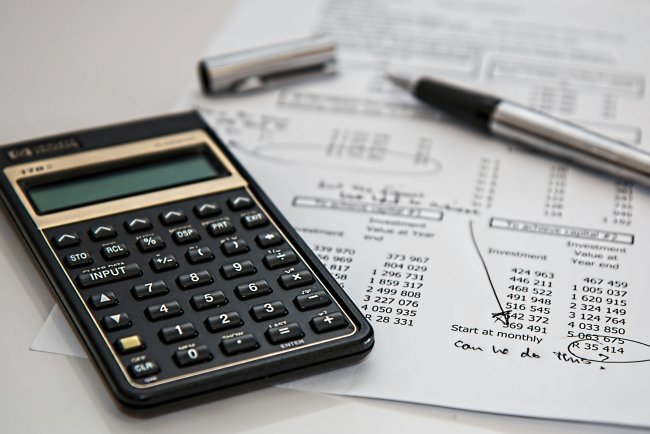Types of Depreciation Entry in Accounting
Depreciation is systematically allocating a fixed asset’s fee over its useful life. In accounting, depreciation entries ensure correct financial reporting by matching costs with revenue. The journal entry for depreciation includes debiting the Depreciation expense account and crediting the accrued Depreciation account. As an example: Dr. Depreciation expense (P&L Account) ₹XXX Cr. accumulated Depreciation (Balance Sheet) ₹XXX Common depreciation techniques include straight-line technique, reducing balance method, and units of production method. Depreciation helps in tax savings and asset valuation. Businesses report depreciation monthly or yearly based on their accounting policies. It's crucial for financial selection-making, asset replacement planning, and compliance with accounting standards like IFRS and GAAP. Right depreciation accounting ensures transparency and correct monetary statements.

Depreciation allows organizations to spread the price of property through the years, reflecting their gradual loss in fees due to use or aging. It ensures correct financial statistics and tax compliance. information on special sorts of Depreciation is important for Accounting. if you're mastering depreciation, an Accounting Course can assist. This guide covers key depreciation entries and their significance.
What is Depreciation in Accounting?
Depreciation in accounting refers to the systematic allocation of an asset's price over its useful lifestyles. This method helps businesses track expenses as they should be and decide asset valuation. Depreciation is essential for calculating taxable profits because it reduces the overall earnings subject to taxation. Many groups and professionals enroll in a Taxation course or a GST course to recognize how depreciation impacts financial statements and tax liabilities.
Types of Depreciation Methods
Different methods are used to record depreciation in accounting, each suitable for specific scenarios:
1. Straight-Line Depreciation
Definition: The straight-line method spreads the fee of an asset lightly over its beneficial existence.
Formula:
[ text{Depreciation Expense} = frac{text{Cost of Asset} - text{Salvage Value}}{text{Useful Life}} ]
Example: If a device charges $10,000 with a salvage cost of $1,000 and a beneficial existence of 5 years, the annual depreciation could be:
[ frac{10,000 - 1,000}{5} = 1,800 ]
Journal entry:
```
Depreciation expense Dr. $1,800
Accumulated Depreciation Cr. $1,800
```
This technique is broadly taught in accounting classes close to me as it is the only and most generally used technique.
2. Declining stability Depreciation
Definition: This method applies a fixed percentage fee to the remaining book value of the asset every 12 months.
Formula:
[ text{Depreciation Expense} = text{Book Value} times text{Depreciation Rate} ]
Example: If a pc charges $5,000 with a depreciation rate of 20%, the first-12 months depreciation would be:
[ 5,000 times 20% = 1,000 ]
Journal entry:
```
Depreciation expense Dr. $1,000
Amassed Depreciation Cr. $1,000
```
This method is right for belongings that lose price quickly, along with electronics and vehicles.
3. Double Declining stability (DDB) Depreciation
Definition: The DDB technique is an extended depreciation technique that doubles the instantly-line fee.
Formula:
[ text{Depreciation Expense} = 2 times text{Straight-Line Rate} times text{Book Value} ]
Instance: If an asset is priced at $10,000 with a 5-yr life, the primary-12 month depreciation might be:
[ 2 times left( frac{1}{5} right) times 10,000 = 4,000 ]
Journal entry:
```
Depreciation price Dr. $four,000
Amassed Depreciation Cr. $4,000
```
4. Sum-of-the-Years’ Digits (SYD) Depreciation
Definition: This technique assigns a higher depreciation cost in the early years and decreases it through the years.
Formula:
[ text{Depreciation Expense} = frac{text{Remaining Life}}{text{Sum of the Years' Digits}} times text{(Cost - Salvage Value)} ]
Example: For a device with a 5-year existence, the sum of years’ digits is:
[ 5 + 4 + 3 + 2 + 1 = 15 ]
If the value is $10,000 with a salvage fee of $2,000, the primary-yr depreciation is:
[ frac{5}{15} times (10,000 - 2,000) = 2,667 ]
Journal entry:
```
Depreciation cost Dr. $2,667
Collected Depreciation Cr. $2,667
```
5. Devices of production Depreciation
Definition: This technique calculates depreciation based on asset usage, making it ideal for production gadgets.
Formula:
[ text{Depreciation Expense} = frac{text{(Cost - Salvage Value)} times text{Units Produced}}{text{Total Estimated Units}} ]
Example: If a gadget costs $50,000, has a salvage price of $5,000, and is expected to produce 100,000 units, then:
[ frac{(50,000 - 5,000) times 10,000}{100,000} = 4,500 ]
Journal entry:
```
Depreciation cost Dr. $4,500
Accrued Depreciation Cr. $4,500
```
Importance of expertise Depreciation in Accounting
Agencies and experts need to understand depreciation to ensure compliance with financial regulations. Many accounting publications, taxation, and a GST course cover depreciation substantially to assist newcomers in apprehending asset valuation, taxation benefits, and rate control.
Benefits of studying Depreciation in an Accounting course
- Better financial control: Helps businesses allocate resources effectively.
- Tax advantages: Decreasing taxable income by recording depreciation prices.
- Accurate financial Statements: Ensures transparency in asset valuation.
- Compliance with policies: Meets accounting standards and tax laws.
Conclusion
Understanding the varieties of depreciation entries in accounting is crucial for financial management and tax planning. whether you're a business owner, accountant, or student, learning approximately this type of guide will help you make informed financial decisions.
What's Your Reaction?
















